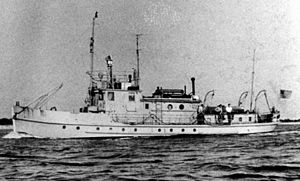
USS Oceanographer (AGS-3) was a survey ship of the United States Navy during World War II that produced charts chiefly of passages in the Solomon Islands area of the Pacific Ocean. Upon transfer to the Navy, she had initially briefly been named and classed as gunboat USS Natchez (PG-85). Before her World War II Navy service, she had been USC&GS Oceanographer (OSS-26), a survey ship with the United States Coast and Geodetic Survey from 1930.
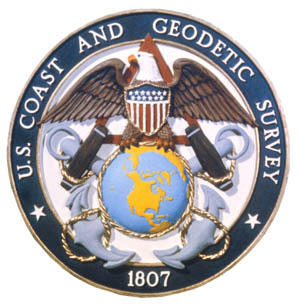
The United States Coast and Geodetic Survey, known from 1807 to 1836 as the Survey of the Coast and from 1836 until 1878 as the United States Coast Survey, was the first scientific agency of the United States Government. It existed from 1807 to 1970, and throughout its history was responsible for mapping and charting the coast of the United States, and later the coasts of U.S. territories. In 1871, it gained the additional responsibility of surveying the interior of the United States and geodesy became a more important part of its work, leading to it being renamed the U.S. Coast and Geodetic Survey in 1878.

USC&GS Thomas R. Gedney, originally USCS Thomas R. Gedney, was a survey ship in service in the United States Coast Survey from 1875 to 1878 and in the United States Coast and Geodetic Survey from 1878 to 1915.
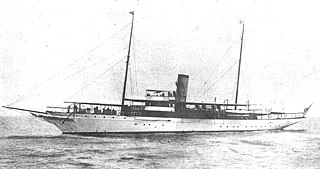
USS Lydonia (SP-700) was United States Navy patrol vessel in commission from 1917 to 1919 that saw service during World War I. Prior to her U.S. Navy service, she had been William A. Lydon's private yacht, Lydonia II, from 1912 to 1917. She spent most of the war based at Gibraltar, escorting and protecting Allied ships in the Mediterranean and along the Atlantic Ocean coast of Europe. After her U.S. Navy service ended, she served from 1919 to 1947 in the United States Coast and Geodetic Survey as the coastal survey ship USCGS Lydonia (CS-302).

USC&GS Pioneer was a survey ship that served in the United States Coast and Geodetic Survey from 1922 to 1941. She was the first ship of the Coast and Geodetic Survey to bear the name.

USS Surveyor was an armed steamer that served in the United States Navy from 1917 to 1919. Prior to her U.S. Navy service, she operated as the survey ship USC&GS Surveyor for the United States Coast and Geodetic Survey in 1917, and she returned to that role after her U.S. Navy decommissioning, remaining in Coast and Geodetic Survey service until 1956.
USCS Baton Rouge, later USC&GS Baton Rouge, was a stern-wheel steamer that served as a survey ship in the United States Coast Survey from 1875 to 1878 and in the United States Coast and Geodetic Survey from 1878 to 1880.

USS Elsie III (SP-708) was a United States Navy patrol vessel in commission from 1917 to 1919 that saw service during World War I. After the completion of her U.S. Navy career, she was in commission in the United States Coast and Geodetic Survey as the survey launch USC&GS Elsie III from 1919 to 1944.

USC&GS Ranger was a steamer that served in the United States Coast and Geodetic Survey from 1919 to 1930 or 1931.

Gilbert T. Rude (1881–1962) was an officer in the United States Coast and Geodetic Survey—one of the ancestor organizations of the United States National Oceanic and Atmospheric Administration (NOAA) -- and the United States Navy. He served as Chief of the Division of Coastal Surveys in the Coast and Geodetic Survey. A NOAA ship was named for him.

USC&GS Matchless was a wood, two masted schooner that served as a survey ship in the United States Coast and Geodetic Survey from 1885 to 1919. She was the only Coast and Geodetic Survey ship to bear the name and the last sailing vessel owned and operated by the Survey.

USC&GS Isis was a survey ship that served in the United States Coast and Geodetic Survey from 1915 to 1917 and from 1919 to 1920.
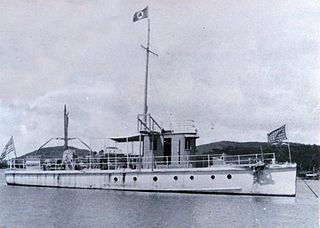
USC&GS Marindin was a launch that served as a survey ship in the United States Coast and Geodetic Survey from 1919 to 1944. She was the only Coast and Geodetic Survey ship to bear the name.
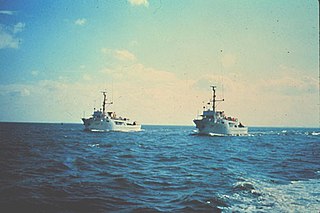
NOAAS Heck was a Rude-class hydrographic survey ship in the National Oceanic and Atmospheric Administration (NOAA) from 1970 to 1995. Prior to her NOAA service, she was in commission from 1967 to 1970 in the United States Coast and Geodetic Survey as USC&GS Heck.

The second USC&GS Fathomer was a steamer that served as a survey ship in the United States Coast and Geodetic Survey from 1905 to 1942.

The first USC&GS McArthur, originally USCS McArthur, was a steamer that served as a survey ship in the United States Coast Survey from 1876 to 1878 and in the United States Coast and Geodetic Survey from 1878 to 1915.

NOAAS Davidson was a survey ship in commission in the National Oceanic and Atmospheric Administration (NOAA) from 1970 to 1989. Prior to her NOAA service, she was in commission in the United States Coast and Geodetic Survey from 1967 to 1970 as USC&GS Davidson, the second Coast and Geodetic Survey ship of the name. She was the only sister ship of NOAAS McArthur (S 330).
The first USC&GS Davidson was a launch in service with the United States Coast and Geodetic Survey from 1933 to 1935.

USC&GS Cosmos was a survey launch in service in the United States Coast and Geodetic Survey from 1887 to 1927.

USC&GS Mitchell was a launch that served as a survey ship in the United States Coast and Geodetic Survey from 1919 to 1944.
